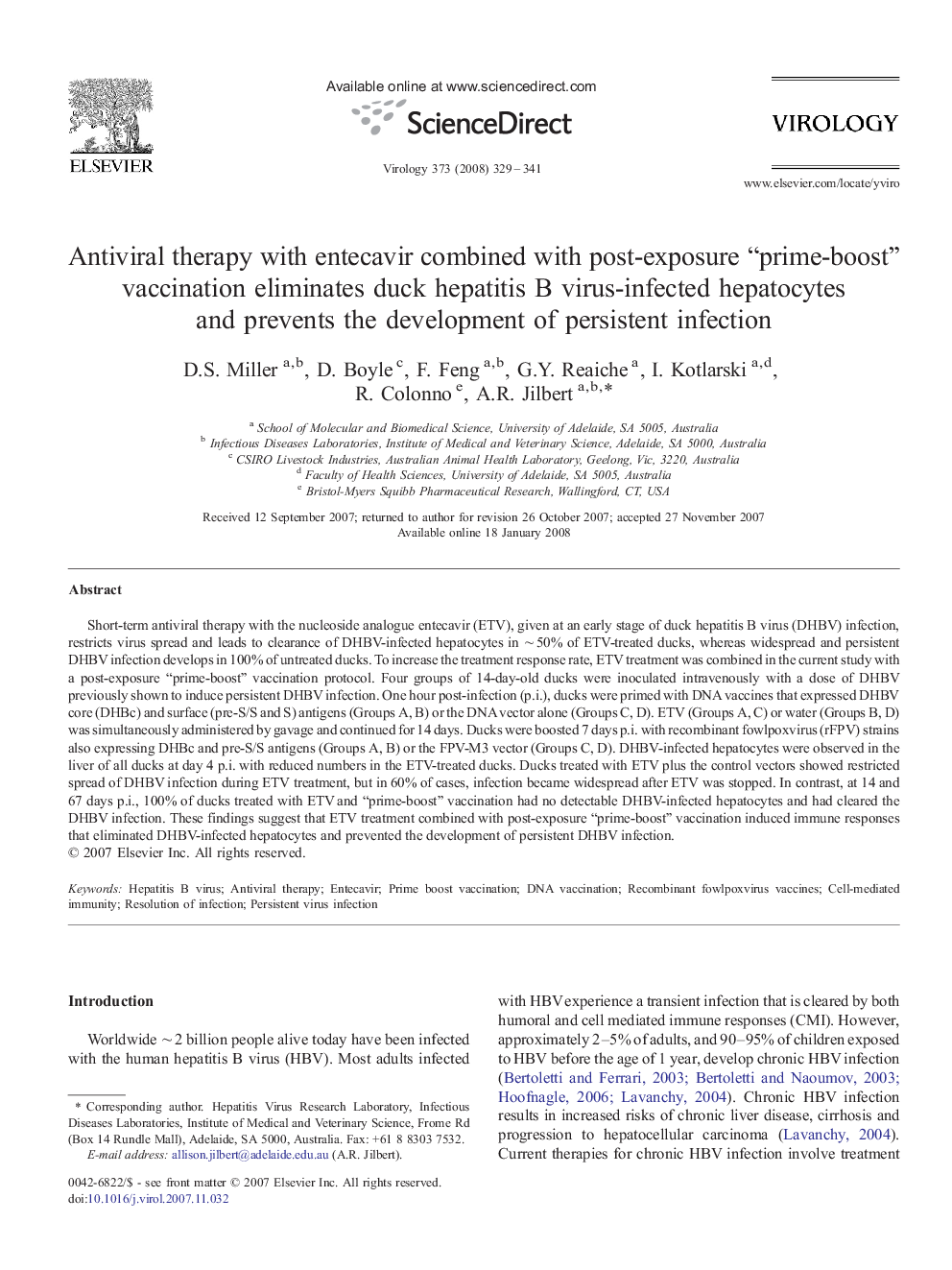| Article ID | Journal | Published Year | Pages | File Type |
|---|---|---|---|---|
| 3425924 | Virology | 2008 | 13 Pages |
Abstract
Short-term antiviral therapy with the nucleoside analogue entecavir (ETV), given at an early stage of duck hepatitis B virus (DHBV) infection, restricts virus spread and leads to clearance of DHBV-infected hepatocytes in â¼Â 50% of ETV-treated ducks, whereas widespread and persistent DHBV infection develops in 100% of untreated ducks. To increase the treatment response rate, ETV treatment was combined in the current study with a post-exposure “prime-boost” vaccination protocol. Four groups of 14-day-old ducks were inoculated intravenously with a dose of DHBV previously shown to induce persistent DHBV infection. One hour post-infection (p.i.), ducks were primed with DNA vaccines that expressed DHBV core (DHBc) and surface (pre-S/S and S) antigens (Groups A, B) or the DNA vector alone (Groups C, D). ETV (Groups A, C) or water (Groups B, D) was simultaneously administered by gavage and continued for 14 days. Ducks were boosted 7 days p.i. with recombinant fowlpoxvirus (rFPV) strains also expressing DHBc and pre-S/S antigens (Groups A, B) or the FPV-M3 vector (Groups C, D). DHBV-infected hepatocytes were observed in the liver of all ducks at day 4 p.i. with reduced numbers in the ETV-treated ducks. Ducks treated with ETV plus the control vectors showed restricted spread of DHBV infection during ETV treatment, but in 60% of cases, infection became widespread after ETV was stopped. In contrast, at 14 and 67 days p.i., 100% of ducks treated with ETV and “prime-boost” vaccination had no detectable DHBV-infected hepatocytes and had cleared the DHBV infection. These findings suggest that ETV treatment combined with post-exposure “prime-boost” vaccination induced immune responses that eliminated DHBV-infected hepatocytes and prevented the development of persistent DHBV infection.
Related Topics
Life Sciences
Immunology and Microbiology
Virology
Authors
D.S. Miller, D. Boyle, F. Feng, G.Y. Reaiche, I. Kotlarski, R. Colonno, A.R. Jilbert,
